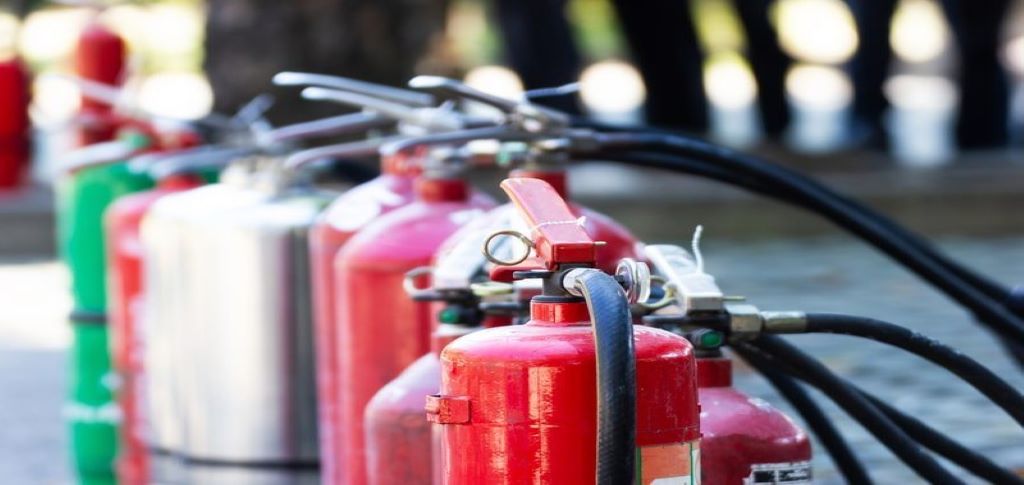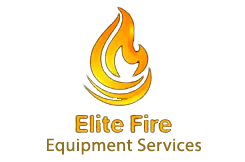Fire Extinguisher Types and Uses: Choosing The Right Class

If you weren’t aware, there are five different fire extinguisher types and uses. What this means is that you should have the right fire extinguishers for your business premises in order to meet current regulations. Along with this, you must also make sure that you have the right size and weight but the different extinguishers are designed to extinguish fires that are started using different types of fuels. These are known as classes of fire and the risks from these different classes to your business will determine the type of fire extinguisher you require.
There might be five different types of fire extinguishers but there are different versions of water and dry powder extinguishers. As a result, there are a total of eight extinguishers to select from although we are going to cover the main five extinguishers.
Classes of Fire
Fires come in different types of classes and these are known as Class A, Class B, Class C, Class D, Electrical and Class F.
Class A – This includes combustible materials which include paper, fabric and wood as well as other solids.
Class B – This includes flammable liquids such as paint and petrol
Class C – This includes flammable gases such as butane, methane or hydrogen
Class D – This includes combustible metals which could include magnesium, potassium or aluminium
Electrical Fires – This includes electrical equipment such as computers and photocopiers although once the electrical item has been removed the class changes
Class F – This includes cooking oils such as a chip pan fire.
Getting Started with Fire Extinguisher Types
Water Extinguishers
Label Colour – This is identified by the bright red label.
Uses – Used to extinguish fires that involve organic materials such as paper and cardboard, fabrics and textiles as well as wood and coal. This type of fire extinguisher is used to deal with Class A fires.
Do Not Use For – It should not be used for fires that involve electrical equipment, flammable gas and liquids and kitchen fires.
How does it work – This is used to extinguish the fire by having a cooling effect that can stop the fire from burning quickly until the fire is extinguished.
Types of businesses that may need an extinguisher – Water fire extinguishers should be used across a number of settings such as:
Buildings made of wood or organic materials
- Buildings where organic materials are found such as offices, schools, hospitals, residential properties and warehouses
- Where to store – They should be located near exits on floors where the risk of a Class A fire has been identified.
Where to store – They should be located near exits on floors where the risk of a Class A fire has been identified.
Foam Extinguishers
Label Colour – This is identified by the cream label
Uses – Used to extinguish fires that involve organic materials such as paper and cardboard, fabrics and textiles, wood and coal as well as flammable liquids such as paint. This type of extinguisher is used to fight Class A and Class B fires.
Do Not Use For – Foam fire extinguishers should not be used for kitchen fires, fires involving electrical equipment and flammable metals.
How does it work – In the same way as water, this extinguisher will cool the fuel while it will create a barrier between the fuel and the flame to extinguish the fire.
Types of business that may need extinguisher – This extinguisher will be found in premises or businesses that are:
Made of wood or organic materials
- Premises where organic materials are found such as offices, schools, hospitals, residential properties, warehouses and buildings are used to store flammable liquids.
Where to store – This extinguisher would be stored near exits on floors where both Class A and Class B fire risks have been identified.
Dry Powder Extinguishers
Label Colour – This is identified by the blue label
Uses – Used to extinguish fires that involve cardboard, paper, textiles, fabrics, wood, coal as well as flammable liquids, flammable gases and fires that involve electrical equipment up to 1000v. This type of fire extinguisher is used to fight Class A, B and C fires.
Do Not Use For – This should not be used for fires that involve electrical equipment over 1000v, cooking oil or in enclosed spaces.
How does it work – The dry powder works by smothering the fire and preventing the fuel and source of oxygen from interacting.
Types of business that may need extinguisher – This extinguisher will be found in premises or businesses such as:
- garage forecourts
- liquid petroleum dispensing plants
- welding or flame-cutting businesses
Where to store – They should be stored next to the source of fire risk.
Carbon Dioxide (CO2 Extinguishers)
Label Colour – This is identified by the black label.
Uses – Used to extinguish fires that involve flammable liquids such as petrol and paint as well as electrical fires. This type of fire can be used to fight Class B fires and Electrical fires.
Do Not Use For – This should not be used for kitchen fires involving chip pans, combustible materials or flammable metals.
How does it work – Carbon dioxide extinguishers work by displacing oxygen, preventing the fire from burning.
Types of business that may need extinguisher – This co2 extinguisher will be found on premises where there is a risk of electrical fire such as:
- Offices
- Kitchens
- Server Rooms
- Construction Sites
Where to store – This extinguisher should be stored near the source of the fire risk.
Wet Chemical Fire Extinguishers
Label Colour – This is identified by the yellow label.
Uses – Used to extinguish fires that involve cooking oil, fat, and organic materials such as paper and cardboard, fabrics, textiles, wood and coal. These fire extinguishers are used to light Class A fires and Class F fires.
Do Not Use For – This should not be used on electrical fires, flammable metals and flammable liquid or gas fires.
How does it work – This wet chemical extinguisher will leave a layer of foam on top of the burning material and this stops the oxygen from fuelling the fire. Furthermore, it also works to cool the fire. The extinguisher contains potassium and this reacts with the or fat to create a soapy film on top of the fire and this helps to starve the fire of oxygen.
Types of businesses that may need extinguishers – Chemical fire extinguishers will be found on premises such as:
- Canteens
- Commercial kitchens
Where to store – This extinguisher should be stored close to the source of the fire risk.
How to Use a Fire Extinguisher
To use a fire extinguisher, you will need to follow the following steps:
- Break the tamper-proof seal and remove the pin.
- Hold the lever in one hand and then remove the discharge hose nozzle with the other hand. You can then hold the discharge hose 5cm from the nozzle
- Keep the fire extinguisher in the upright position when using it
- Face the extinguisher away from the fire and squeeze the lever to ensure it works.
- Point the nozzle at the base or the back of the fire and then gently squeeze the nozzle and then make a sweeping motion, side to side across the fire.
- Continue pointing the extinguisher at the base of the fire and continue to squeeze the handle until the extinguisher is discharged completely to ensure that the fire is extinguished fully.
Make Sure Your Business Is Protected
It is vital that you ensure that your business is protected by having the correct fire extinguishers in place. This means that you should understand the difference between extinguishers and how they help to reduce the risk of fire on your premises.
Choosing The Right Class
To ensure you meet the required regulations, you should ensure that you identify the risks. Once this has been done, you can then determine the right class based on the risk and your needs. It is important that you choose the right class as this will ensure you give yourself the best opportunity to extinguish the fire. This is because each class is designed to fight fires that involve certain materials or chemicals.
Ready to Buy a Fire Extinguisher?
If you have identified the fire risks associated with your premises and business, Elite fire equipment services stock all classes of fire extinguishers to fit your needs.
